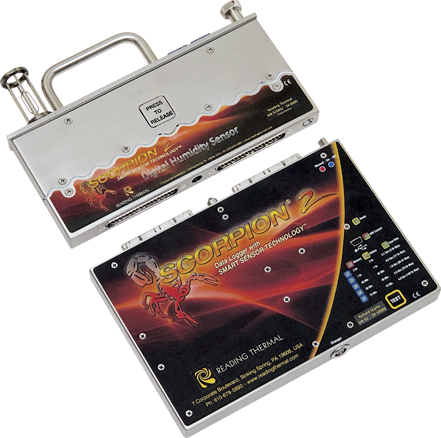Making sure your bakery products like cakes, pastries, cookies, etc. are produced to the highest quality can be a tricky task. There is much more to consider than just making sure ingredients and dough mixtures are precise; you also need to make sure that baking conditions in the ovens within your commercial bakery premises are consistently monitored too. This includes controlling humidity levels within your commercial ovens depending on what type of goods you’re baking – for some products such as breads or pies, too much humidity causes them to become gummy and soggy over time whereas for other types such as cakes higher levels produce better results so checking temperature regularly alongside addressing any problems with elevated levels is essential. By monitoring oven humidity for quality control in commercial bakeries with tools from Reading Thermal, you can increase the level and quality of your baked goods output, while also minimizing the risk of any problems arising from inconsistent baking conditions.
If you’re in the business of baking, you know that even a small variation in temperature or humidity can be the difference between a perfect product and a lackluster one. That’s where Reading Thermal steps in – our expertise in the field can help you easily monitor oven humidity for quality control. But we don’t stop there. We’ve also developed the SCORPION® 2 Digital Humidity Sensor to compile real-time information, enabling your line workers to make informed decisions and improve the baking process for superior products. With our system, you’ll have the peace of mind that comes with knowing exactly what’s going on in your ovens, and the ability to make adjustments to ensure every batch is perfect.
How Humidity Impacts Your Baked Goods
Quality control is the cornerstone of any successful bakery – and humidity plays a big role in that. Different baked goods require different levels of humidity to optimize the results; too much or too little can have a significant impact on the final product.
For example, breads and pies are best baked in an oven with low humidity, and the addition of a small amount of water during baking can be beneficial. On the other hand, cakes do better in an oven with higher humidity, which helps retain moisture and keep the texture soft and fluffy.
By monitoring oven humidity for quality control in commercial bakeries, you can ensure that your oven meets the needs of whatever type of goods you’re baking. This extra level of control gives you ultimate confidence in the quality of your products. Considering how precise baking must be to consistently produce the same products, ensuring that your humidity levels are able to reach your bakery’s standard is key to successful production.
Monitoring Humidity
Bakers can’t reliably determine the precise application of humidity during the baking cycle on observation and guesswork alone. Humidity applications, such as steam injection, are required to be monitored and adjusted based on the product’s characteristics. The best way to profile your oven humidity levels is with Reading Thermal’s SCORPION® 2 Digital Humidity Sensor, allowing bakers and line workers to measure moisture content in both heating and cooling processes.
The only way your business can produce a crisp cracker, glossy bun, or soft donut is by monitoring oven humidity for quality control in commercial bakeries. If you’re interested in Reading Thermal’s solutions, call us at (610) 678-5890 Ext. 2, or contact us online for more details about our innovative products.

